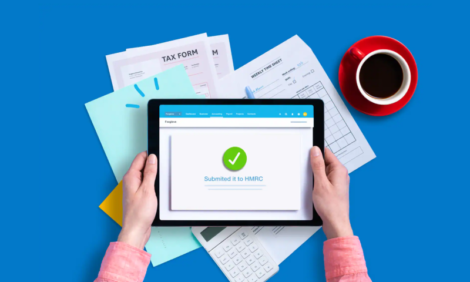
Making Tax Digital for Income Tax Self Assessment: Our guide to Unique Taxpayer Reference numbers

It would be no surprise to learn that many accounting practices and their small business, landlord and sole trader clients are currently suffering from confusion from overuse of acronyms (CFOA).
While this newly-invented acronym may be useful, we won’t rely on it too heavily. Frankly, you already have enough to remember, thanks to Making Tax Digital (MTD) for VAT and Income Tax Self Assessment (ITSA).
The government legislation with the goal of digitising the tax process has been underway for some time, and the next step is looming large on the horizon. From April 2024, sole traders and landlords with a total annual income above £10,000 need to use MTD for ITSA compatible software to keep digital records and file returns.
But that’s not all landlords and sole trader clients need to know – here, we’ll dive into another of the many acronyms you’ll need to be aware of, with this short guide on Unique Taxpayer Reference (UTR) numbers.
What is a UTR number?
A UTR is a 10-digit number that helps HMRC to identify you or your business, enabling them to find your tax account and match your payment with your bill.
HMRC automatically issues a UTR number when you register for self-assessment. You might have a UTR number as an individual, as well as a separate UTR number for your business. You will need to use this UTR number to submit tax returns, pay tax bills, or work with an accountant.
However, it’s important to note that while this is true for current self-assessment, in the future, all submissions will be made by National Insurance number through MTD for ITSA software. UTR numbers will still be relevant for those filing non-MTD income.
Meanwhile, self-employed people under the Construction Industry Scheme (CIS) will need a UTR number to register for a tax refund.
Make sure you take note of your UTR number as you’ll need to use it throughout self-employment.
Why you need your UTR number for self assessment
You need a UTR number to submit your tax return online for the current self-assessment process. If you submit a return with a wrong UTR number you may be hit with a fine. This is because it won’t show on your record as submitted, leading to a later filing penalty.
Your accountant may need it if they are signing you or your business up for MTD, or if you’d like to claim a tax refund from HMRC. Also, it’s important to remember that only your accountant or financial advisor and HMRC need to see your UTR number.
Stolen UTR numbers have been used by fraudsters, so be sure to keep it private.
How to get a UTR number for the first time
There are a few ways you can apply for a UTR number, and the quickest is by registering for self-assessment online. Simply provide HMRC with all of the information they need in one step, and your UTR number and activation code will be sent to you. You can also call HMRC, or write a letter requesting a UTR number.
You’ll need some basic information to register for self-assessment, including:
- Full name and date of birth
- Address
- National Insurance number
- Phone number
- Email address
Meanwhile, if you’re a business owner, you’ll also need to provide the date you became self-employed, your business type (limited company, general partnership, and so on), address, and phone number.
How to find your UTR number if already registered
If you’re already registered for self-assessment, sign in to your government gateway and navigate to your personal tax account. You’ll see your UTR number at the top of the page, while it will also appear on letters relating to your tax account sent by HMRC, as well as notices to file your return and payment reminders.
If you still can’t find your UTR number, call HMRC’s self-assessment helpline.
Limited companies can request their Corporation Tax UTR number online. This will be sent to your registered business address, and you’ll need to share your company registration number and registered company name.
Where to find more information
While we can’t promise an end to acronyms and CFOA, this blog post should clear up some questions you may have around UTR numbers. If you’d like to know more, check out our detailed guide. To learn more about MTD for ITSA, head to our resource hub.
The post Making Tax Digital for Income Tax Self Assessment: Our guide to Unique Taxpayer Reference numbers appeared first on Xero Blog.
Source: Xero Blog






